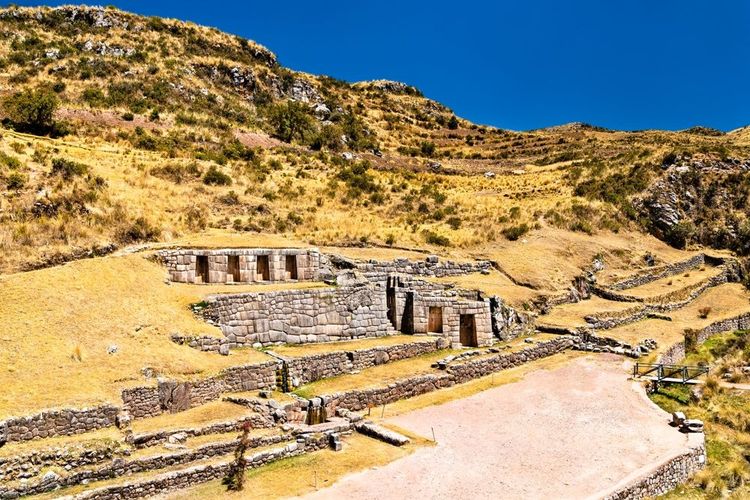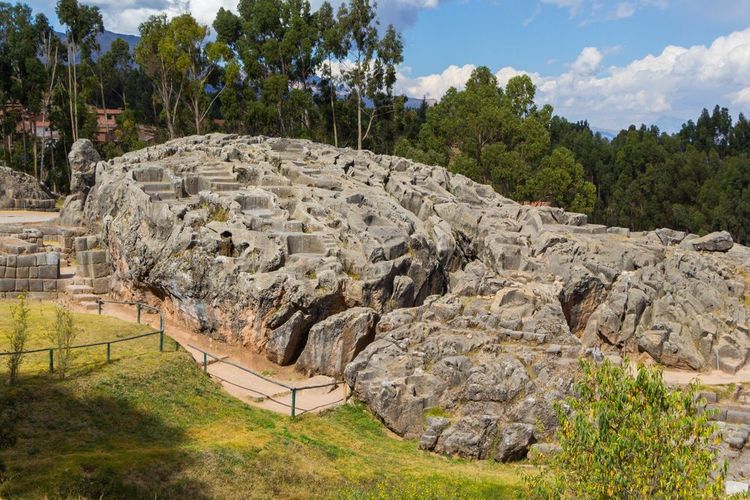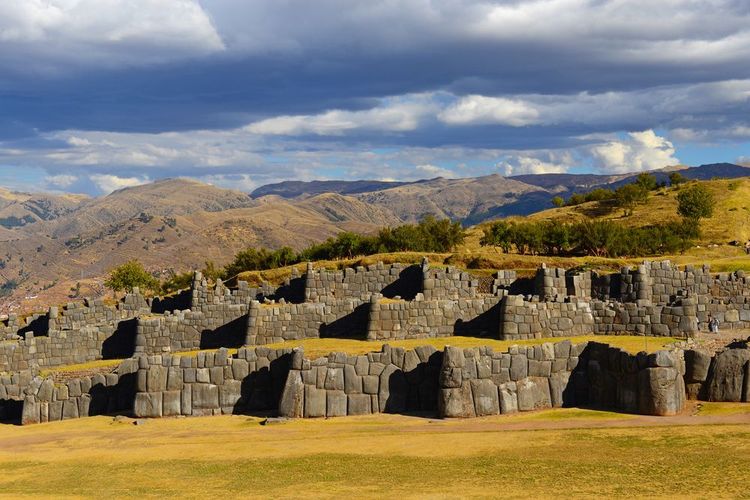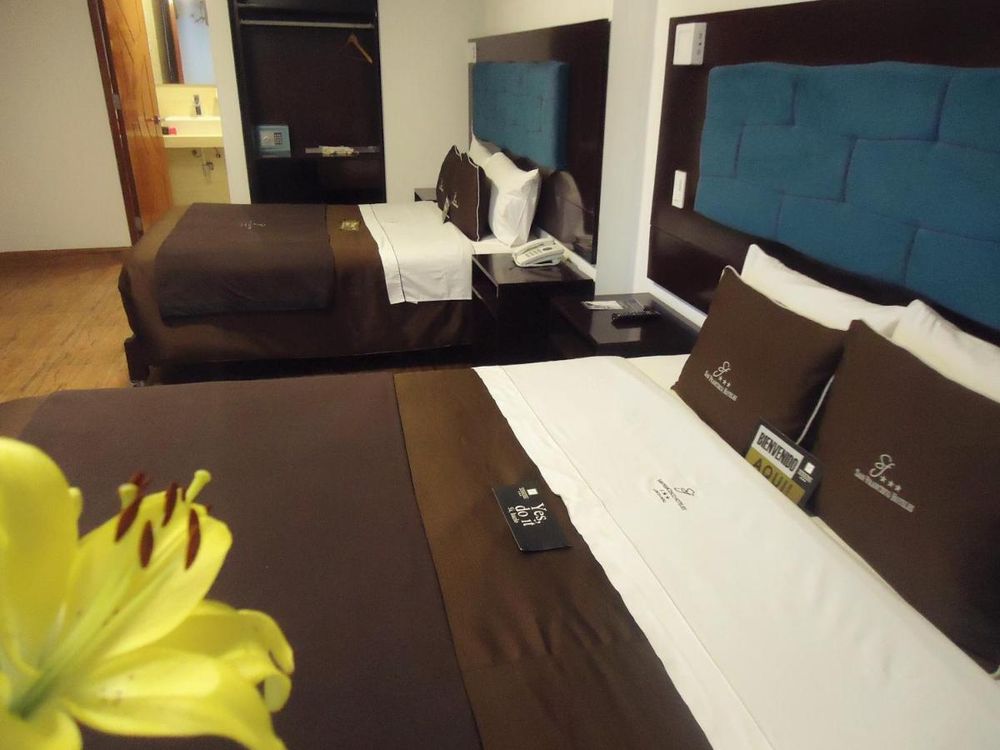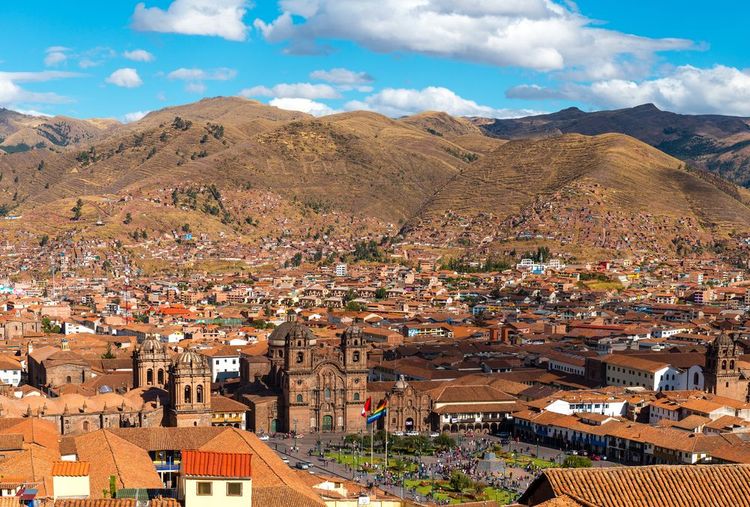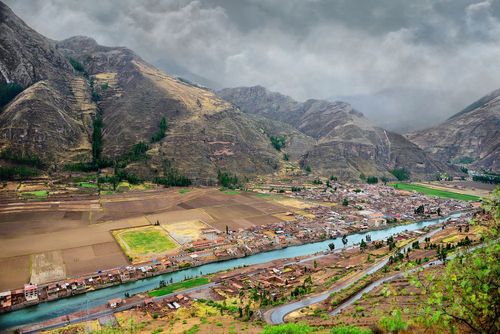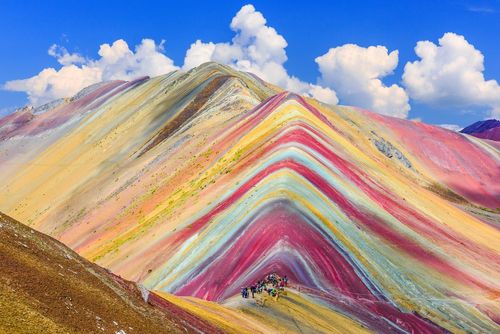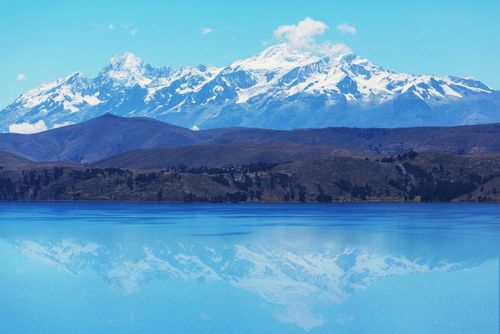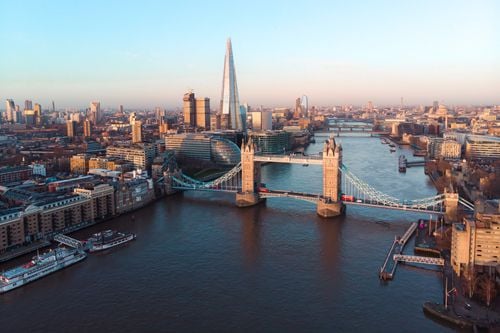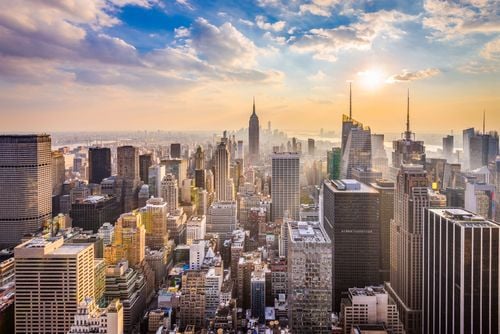Tambomachay or Tampumach'ay means "place of rest" in Quechua.
Situated at an altitude of 3800m and 8km from Cuzco, this is the first stage of your excursion.
Tambomachay was undoubtedly a stopover on the way to the Incas' Sacred Valley and dates back to the year 1500. It was a mythical place, a place of purification, perhaps imperial baths where water was celebrated, or simply an ancient spa, hence its nickname "El Baño del Inca", meaning the bath of the Inca.
Two still-functioning fountains of pure spring water, tiered terraces, a series of aqueducts and canals and a waterfall make up this remarkable site.

